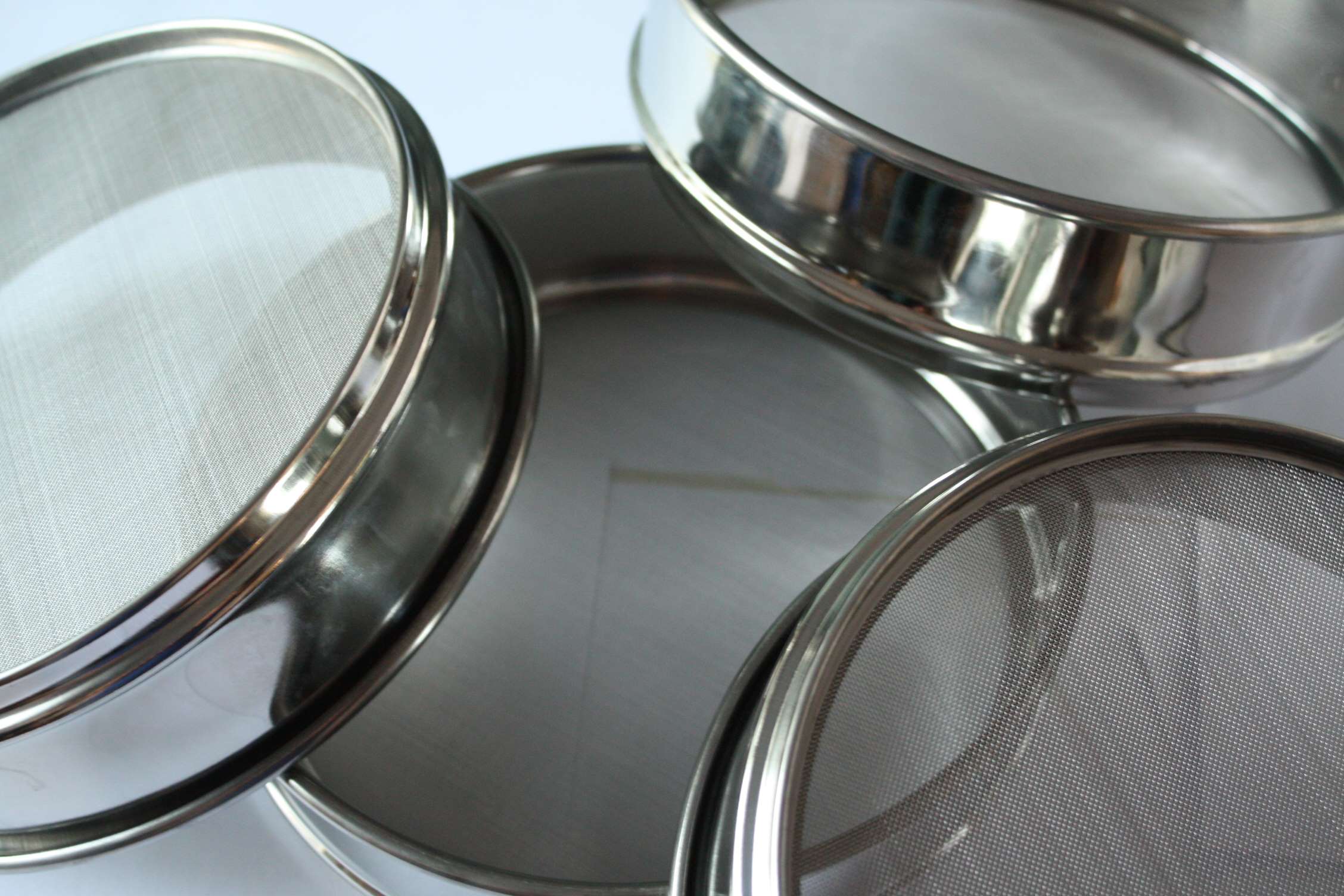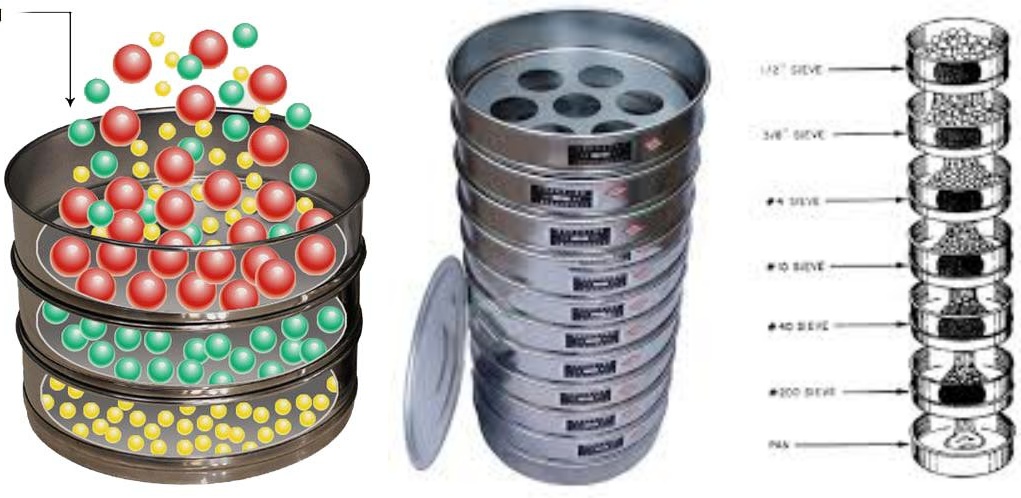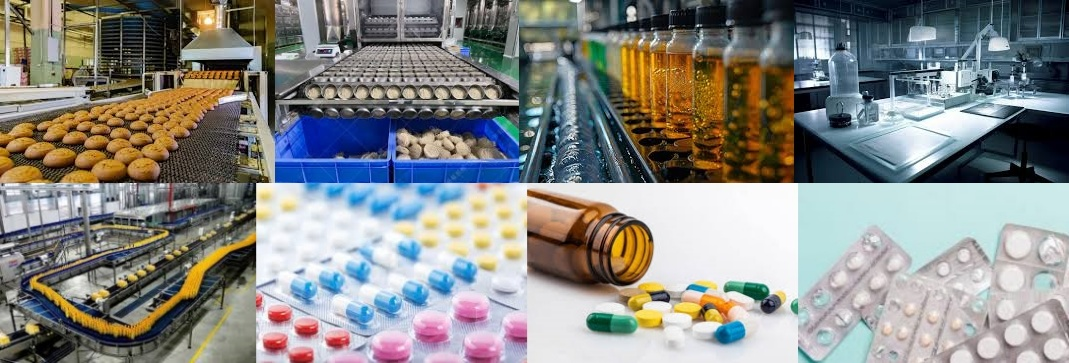Thursday February-27 2025 12:15:22

Liquid food test sieves are usually used to screen and filter liquid foods to remove solid particles, impurities or extract the desired ingredients. Liquid foods are separated by particle size through sieves with different apertures to obtain components of different particle sizes. Liquid food test sieves are mainly used in laboratory environments or small batch production to evaluate the particle distribution and particle size analysis of liquid foods, or to remove solid particles to improve product quality.

When liquid food passes through the test sieve, solid particles or impurities will be blocked by the sieve, while the liquid part will pass through the sieve into the container below. The hole size on the sieve determines the size of particles that can pass through. Smaller particles will be blocked on the sieve, while smaller particles can pass through the sieve.

1. Screen design: The screen is usually made of food-grade stainless steel or other materials, with a special design and aperture to ensure effective filtration of particles and impurities in liquid food.
2. Scope of application: Liquid food test sieves are suitable for various liquid foods, such as juice, beverages, soups, sauces, etc., and can be adjusted and selected according to the characteristics of different foods.
3. Particle size analysis: Through the liquid food test sieve, particles can be analyzed and classified to help understand the size distribution of solid particles in food.
4. Laboratory application: Liquid food test sieves are often used in laboratory environments to study and evaluate the particle characteristics of food samples to guide production processes and quality control.

Liquid food test sieve usually consists of a sieve frame, a screen, a vibrating device, a clamping device and a base. The sieve frame is the main part of the test sieve, usually made of stainless steel or other corrosion-resistant materials. The sieve frame is equipped with screens of different apertures to separate materials of different particle sizes. The screen is the core component of the screening, usually made of stainless steel or manganese steel.

1. Food processing: Liquid food test sieve can be used to filter liquid food during food processing, such as removing particles from juice, sauce, soup, etc.
2. Beverage production: Liquid food test sieve can be used to filter liquid products such as juice and beverages to remove solid particles such as pulp and seeds.
3. Pharmaceutical preparation: Liquid food test sieve can be used to filter liquid medicine to remove impurities or solid particles to ensure the purity and quality of the medicine.
4. Laboratory research: Liquid food test sieve can also be used to study experiments such as particle distribution and particle size analysis of liquid food.

When choosing a liquid food test sieve, you need to choose the right equipment to meet your needs. Here are some factors to consider when choosing a liquid food test sieve:
Food properties: First, consider the properties of the liquid food you want to screen, such as viscosity, particle size, concentration, etc. Different liquid foods may require different types of sieves and screening equipment.
Sieve material: Choose a sieve made of food-grade material, such as stainless steel or other materials that meet food safety standards to ensure the safety and hygiene of liquid food.
Sieve hole size: Choose the appropriate sieve hole size according to the size of solid particles in the liquid food. Too small an aperture will cause clogging, and too large an aperture will not be effectively filtered.
Sieving efficiency: Consider the required screening efficiency and choose the appropriate screening equipment to ensure that solid particles or impurities can be effectively removed.
Laboratory needs: If it is used for laboratory research, consider the accuracy, repeatability, and compliance with laboratory standards of the equipment.
Production scale: Choose the appropriate equipment according to the production scale. Small batch experiments usually require smaller equipment, while large-scale production may require high-efficiency equipment.
Liquid food test sieves helps to ensure the quality and purity of liquid food, remove impurities and solid particles, and improve the edibility and taste of the product. In the process of food processing and preparation, liquid food test sieves are an important tool that helps to improve production efficiency and product quality.
laboratory test sieve is also called standard sieve, test sieve, laboratory vibrating screen, sample sieve, inspection sieve, standard analysis sieve...
What Is An Electromagnetic Sieve Shaker?
Electromagnetic sieve shaker is a screening equipment used for testing and laboratory research. It is often used to screen and classify small batches...
Test sieve shaker is a laboratory equipment used for particle screening and classification, also known as laboratory shaker or laboratory vibrating...
Feb 27, 2025
Liquid food test sieves are used to screen solid particles, impurities or extract required ingredient...
Feb 27, 2025
Plastic granule test sieve is a device specially used for screening and grading plastic granules. It ...
Feb 27, 2025
304 stainless steel soil test sieve
304 stainless steel soil test sieves are essential tools for accurate soil particle size analysis. Ma...
Feb 27, 2025
Laboratory powder test sieve is an essential instrument used for screening and grading powder or gran...
![]()
Then we look forward to hearing from you
Contact Us
Industrials
Yanjin county forest park gate to the west 1000 meters north road sitemap
